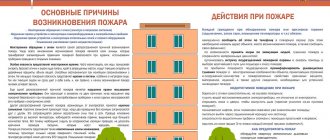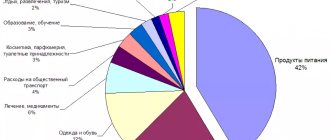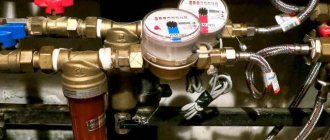What changed?
Experts call the amendments, additions and new control conditions large-scale and radical. The procedure for carrying out control measures and standards for the composition of wastewater have been supplemented with seven innovations:
- The frequency of scheduled control checks has been established - they should be carried out monthly, and not quarterly, as before.
- Visual control of wastewater has been introduced - inspection and verification of the presence of foreign materials, substances or waste in discharged waters. Their presence is checked without taking samples for analysis if they are visually noticed by a specialist. In order to determine the composition of wastewater, the water supply and utility organization must have special equipment.
- The use of automatic devices for conducting studies of collected water is regulated.
- The sampling conditions have been clarified.
- Specific methods and regulations for studying sampled wastewater are presented for specialists.
- The drains of transit organizations will be closely monitored. Control over wastewater systems not connected to the central sewerage main has also been tightened.
- The basis for wastewater control is explained in detail. Unscheduled inspections must be carried out in the following cases:
- emergency incidents;
- the threat of emergency situations in which permissible pollution standards are exceeded;
- lack of access for specialists from inspection bodies to wells.
What do you need to know about wastewater composition standards?
The procedure for establishing standards for the composition of wastewater is regulated by Chapter XIII of the Rules. It specifies wastewater standards, an algorithm for monitoring compliance with standards, and a list of persons responsible for carrying out control activities.
- Standards for the composition of wastewater are established for pollutants for which the facilities of the corresponding water treatment plant have established standards for permissible discharges, as well as technological standards.
- The calculation of standards is entrusted to water supply and utility companies operating in the territory. For the accuracy of calculations, a special formula has been proposed, which is included in the contents of the document.
- Standards for the composition of wastewater are approved by municipalities or regional governments.
- Technologically regulated substances and elements have been installed for domestic and storm sewers.
How are fees for discharges in excess of standards calculated?
The issue of payment for the discharge of pollutants in wastewater is regulated by Chapter XV of the document.
- The amount of payments for discharges in excess of wastewater composition standards is based on the tariffs for payment for negative environmental impact, to which clarifying coefficients may be applied.
- Payment by all users of compensation for damage caused to the centralized sewerage system, if a specific culprit has not been identified.
The rules establish the amounts of fines for various types of violations. But there is no final version yet. The document continues to be updated with new information.
Water disposal through the central wastewater treatment plant: whoever purifies wastewater before discharge is responsible for its quality
Subscribers often discharge wastewater of non-standard quality into the centralized sewerage system (hereinafter referred to as the CWS). As a result, the organization of water supply and sewerage services (hereinafter referred to as WSS) is forced to discharge wastewater into water bodies in violation of the standards for permissible discharges. Who is responsible for the final pollution of a water body?
The organization of water and wastewater services is not a source of generation of wastewater, which is received at the water treatment center, because:
1) contaminated wastewater is generated by CSV subscribers;
2) the water and wastewater services organization handles the wastewater entering the central wastewater treatment center, the quality of which, by and large, initially does not depend on the water and wastewater services organization itself;
3) The capacity of the wastewater treatment facilities of the central wastewater treatment plant is always limited, therefore, the quality of wastewater discharged into the centralized wastewater treatment plant directly affects the quality of wastewater discharged by the water and waste management organization into the water body.
By the way
If the situation were different and water and wastewater organizations could hypothetically provide the required wastewater treatment regardless of its initial quality, then there would be no: • wastewater disposal standards for wastewater composition/wastewater composition standards; • requirements for the composition and properties of wastewater, established in order to prevent negative impacts on the wastewater treatment plant; • subscriber fees for excess discharge; • subscriber fees for negative impact on the central bank.
Considering the limits of the capabilities of treatment facilities and the fact that subscribers often discharge wastewater of non-standard quality into water treatment centers, the following problem is very common: water and wastewater organizations discharge wastewater into water bodies in violation of the standards for permissible discharges .
If subscribers discharge wastewater into the central water supply center, the quality of which does not meet the established requirements (this may be an excess of wastewater disposal standards for the composition of wastewater/wastewater composition standards, or a violation of the requirements established by the rules of cold water supply and wastewater disposal), this affects and violates interests of the water and wastewater services organization.
What interests of the water and waste management organization may be violated? First of all, economic (although there is a high probability of negative administrative and legal consequences for the organization of water and wastewater services).
Within the topic under consideration, the economic interests of the water and waste management organization will be the interests associated with the lack of need:
• bear the costs of eliminating the consequences of the negative impact of wastewater on WSS facilities;
• pay a fee for negative environmental impact (hereinafter referred to as NVOS) in an “extra-limit” amount;
• compensate for damage caused to the environment (water bodies).
To protect the listed economic interests of water and wastewater services organizations, as well as to protect the environment from the negative impact of wastewater discharged into water bodies through water treatment centers, the legislator has come up with special mechanisms that are well known to business entities.
Protection Mechanisms
The first group of requirements that make up the mechanism for protecting the interests of the water and waste management organization are various requirements for wastewater quality .
Next come the requirements for the need to pay various types of fees for violating wastewater quality requirements.
The law also provides for a compensation mechanism that imposes obligations on subscribers to reimburse “extraordinary costs” of the water and utility services organization:
• actual damage caused - if the discharge of the subscriber's wastewater resulted in the destruction of structures, facilities and equipment of the central waste water treatment plant and disruption of the operation of treatment facilities that occurred as a result of violations committed by the subscriber;
• additional costs associated with an increase in fees for excess discharge of wastewater (fees for NVOS) - if the discharge of the subscriber's wastewater resulted in disruption of the operation of treatment facilities and excess discharge of wastewater into a water body;
• costs associated with compensation for damage caused to a water body - if the discharge of the subscriber's wastewater resulted in disruption of the treatment facilities and damage to the water body.
The list of protection mechanisms can be continued, but in this material we do not pursue the goal of covering this issue in detail.
We are only trying to demonstrate the following:
• water and wastewater services organizations have various tools to influence subscribers in terms of regulating the quality of wastewater discharged to the central wastewater treatment plant;
• the law stipulates that the costs of the water and wastewater services organization associated with the consequences of the discharge of wastewater of non-standard quality into the central wastewater treatment plant must be compensated.
Does this mean that the role of the water and waste management organization is reduced to a minimum?:
• accept wastewater into the central wastewater treatment plant;
• control their quality;
• clean as much as possible;
• discharge into a water body without bearing responsibility for something that the water and waste management organization seems unable to influence?
Both water and wastewater services organizations, and CSV subscribers, and especially the supervisory authorities, probably know that this is not so. Let us recall the definition of the concept of “water disposal”:
Dictionary
Wastewater disposal is the reception, transportation and treatment of wastewater using a wastewater treatment plant [1].
The water and wastewater services organization is a water user, the water quality assessment of which is standardized and limited by permitting documentation. This means that, first of all, the water and waste management organization is responsible for the quality of wastewater discharged into a water body .
All possible mechanisms of influence on CSV subscribers were invented not only to protect the interests of the water and wastewater services organization, but also for environmental purposes.
Today, Federal Law No. 416-FZ contains important instructions:
Extract from Federal Law No. 416-FZ
Article 30.2. Calculation of fees for the discharge of pollutants in excess of the established standards for the composition of wastewater and collection of the specified fee from subscribers […] 4. Funds received by the organization carrying out water disposal in the form of fees for the discharge of pollutants in excess of the established standards for the composition of wastewater are used to pay for negative impact on the environment, compensation for damage caused to water bodies, and also as a source of financing [2] for the investment program of an organization carrying out wastewater disposal, in terms of implementing measures to reduce the negative impact on the environment .
However, the cited norm came into force on 01/01/2019. Before this date, it was possible to derive the responsibility of the water and wastewater services organization for the construction, reconstruction, modernization, and technical re-equipment of treatment facilities only from the general requirements for the protection of water bodies, which must be observed by any water users.
It must be said that these requirements in practice sometimes revealed their inconsistency (despite their very imperative nature, such as, for example, the requirements related to the establishment of limits on discharges only if there are plans to reduce discharges).
When it comes to claims from supervisory authorities addressed to water and wastewater organizations on the issue of the quality of discharged wastewater, compensation for damage caused to a water body as a result of the discharge of wastewater of non-standard quality, often the key argument in the dispute between the water and wastewater services organization is the argument “the fault of the water utility in violating quality requirements there is no waste water or harm to the water body.”
To be more precise and formal: there is no cause-and-effect relationship between the actions of the water and waste management organization and the resulting consequences in the form of deterioration in the quality of water in a water body.
The logic is based, in particular, on the fact that the quality of wastewater is not entirely subject to the control of the organization carrying out wastewater disposal; The quality of wastewater is primarily the work of subscribers (collectively and individually). Consequently, the water and waste management organization should not be held liable for causing damage to a water body.
Many arbitration courts think differently, pointing out that organizations engaged in wastewater disposal must ensure wastewater treatment, and must also improve the systems of treatment facilities - that’s why they are water and wastewater services organizations.
Let's take one of the cases as an example.
Resolution of the Arbitration Court of the Far Eastern District dated November 28, 2019 in case No. A51-8049/2018
During an inspection carried out in relation to the water utility, the state environmental supervision authority discovered that the wastewater received from subscribers and discharged into the water body contained pollutants in concentrations exceeding the established requirements.
Discharge of wastewater into a water body leads to a violation of water quality standards in water bodies of fishery importance.
Vodokanal, among other things, insisted that there was no cause-and-effect relationship between its actions and the resulting consequences in the form of deterioration in the quality of water in the water body.
However, the arbitration courts of appeal and cassation instances ruled:
1) the fact that the water utility caused harm to the water body is proven by the very fact of the discharge of wastewater into the water body in excess of the maximum permissible concentration;
2) the actions of the water utility are illegal;
3) there is a cause-and-effect relationship between the illegal actions of the water utility and the damage caused to the water body.
It is interesting how the arbitration courts explained the existence of a cause-and-effect relationship, as well as the guilt of the water and waste management organization in causing harm to the water body:
The appellate court noted that the enterprise, knowing about the real consequences and the actual negative impact on the environment of its economic activities, negligently fails to act, without taking real actions to eliminate the violation of environmental legislation.
The basis for this conclusion, in our opinion, was one of the arguments of the supervisory authority:
[Enterprise - approx. author] for 9 years, charging subscribers for the provision of wastewater services, does not treat the received wastewater, does not carry out measures aimed at neutralizing the negative impact on the environment. Knowing about the real consequences and the actual negative impact of its economic activities on the environment, it negligently remains inactive, without taking real steps and actions to eliminate violations of environmental legislation.
Thus, both the supervisory authority and the arbitration courts actually found the water and wastewater services organization guilty of improperly performing the functions assigned to it for water disposal : receiving, transporting and, of course, treating wastewater .
[1] Clause 2 of Art. 2 of the Federal Law of December 7, 2011 No. 416-FZ “On Water Supply and Sanitation” (as amended on December 25, 2018; hereinafter referred to as Federal Law No. 416-FZ).
[2] Here and below it is emphasized by the author.
Purpose of innovation
The purpose of amending the Water Supply and Sanitation Rules 2021 is to improve the environmental situation.
Thus, according to Federal legislation, users who exceeded the discharge standard for the same pollutant more than twice during the year, or exceeded this standard once by 3 times, must develop a program, the implementation of which will reduce harmful discharges. The cost of doing so will be deducted from their payment for excess discharges.
Consumption standards
Heating and hot water supply
Based on the Decree of the Moscow Government of January 11, 1994 N 41 “On the transition to a new system of payment for housing and utilities and the procedure for providing housing subsidies to citizens,” the standard for heat supply is in effect:
1. Thermal energy consumption standard for heating residential premises: 0.016 Gcal/sq. m
2. Thermal energy consumption standard for water heating: 0.294 Gcal/person.
Water supply and sanitation
According to the Decree of the Moscow Government of July 28, 1998 N 566 “On measures to stimulate energy and water conservation in Moscow - the standard for water supply and sanitation is in force:
| Category | Water disposal (cubic meters per person per month) | Cold water (cubic meters per person per month) | Hot water (cubic meters per person per month) |
| Residential buildings equipped with water supply, sewerage, baths with centralized hot water supply | 11,68 | 6,935 | 4,745 |
| Residential buildings equipped with running water, sewerage, bathtubs with multi-point gas heaters | 9,86 | 9,86 | — |
| Residential buildings equipped with sewerage, running water with gas heaters near the baths | 9,49 | 9,49 | — |
| Hotel-type residential buildings equipped with running water, gas and hot water supply | 7,31 | 4,386 | 2,924 |
| Residential buildings with water supply, sewerage, without baths, with gas pipeline | 4,57 | 4,57 | |
| Residential buildings using water from standpipes | 1,83 | 1,83 |
Electricity
According to the Decree of the Moscow Government of December 20, 1994 N 1161 “On the transition to the second stage of the reform of the payment system for housing and communal services” in Moscow there is a standard for electricity consumption:
| For single citizens living in an apartment equipped with a gas stove | 50 kWh/person - per month |
| For single citizens living in an apartment equipped with an electric stove | 80 kWh/person - per month |
| For families living in an apartment equipped with a gas stove | 45 kWh/person - per month |
| For families living in an apartment equipped with an electric stove | 70 kWh/person - per month |
Gas supply
Based on Resolution of the Moscow Government of January 11, 1994 No. 41 “On the transition to a new system of payment for housing and utilities and the procedure for providing housing subsidies to citizens,” the following gas consumption standard is in effect in Moscow:
| If the apartment has a gas stove and centralized hot water supply | 8.3 cubic meters/person per month |
| If the apartment has a gas stove and a gas water heater (in the absence of a centralized hot water supply) | 20.8 cubic meters/person per month |
| If there is a gas stove in the apartment and there is no centralized hot water supply and gas water heater | 10.4 cubic meters/person per month |
Payment according to the standard for heating is made if a common house heat meter is not installed in the house. Payment for electricity, water supply, sewerage and gas is made according to established standards, unless an individual meter is installed. At the same time, it is also necessary to take into account the fact that according to the Decree of the Government of the Russian Federation of April 16, 2013 No. 344, in the event that consumers do not have metering devices (collective or individual), if it is technically possible to install them, increasing standards for the consumption of utility services in residential premises will be applied coefficients.
- From January 1 to June 30, 2015 – 1.1.
- From July 1 to December 31, 2015 – 1.2.
- From January 1 to June 30, 2021 – 1.4.
- From July 1 to December 31, 2021 – 1.5.
- From 2021 – 1.6.
We recommend
Water supply and sanitation in 2021. New environmental standards and requirements. Wastewater control. Seminar in Moscow + Online broadcast
Practicing experts will give recommendations on reducing and preventing antimonopoly risks, preparing for obtaining a comprehensive environmental permit in 2021, rules for establishing temporarily permitted discharges, calculating payments for the negative impact on the central heating system, implementing measures to reduce discharges in order to reduce subscription fees, and other topical issues in the field of water supply and sanitation in 2021.
Tariffs and standards
HomeQuestion-answer Tariffs and standards
Standards:
1. Order No. 162-RV dated December 9, 2014 “On approval of standards for the consumption of utility services”
2. Order dated May 22, 2017 No. 63-RV “On approval of standards for the consumption of utility resources for the purpose of maintaining common property in an apartment building on the territory of the Moscow Region”
Rates:
— Electricity supply
1. Order of the Committee on Tariffs and Prices of the Moscow Region dated December 17, 2019 No. 373-R “On setting prices (tariffs) for electrical energy for the population and equivalent categories of consumers in the Moscow Region for 2021”
— Gas supply
1. Order of the Committee on Prices and Tariffs of the Moscow Region dated September 18, 2020 No. 149-R “On setting prices for natural gas sold to the population, as well as housing maintenance organizations, organizations managing apartment buildings, housing construction cooperatives and homeowners’ associations for household needs of the population, except for gas for tenants of non-residential premises in residential buildings"
2. Order of the Committee on Prices and Tariffs of the Moscow Region dated December 20, 2018 No. 392-R "On setting prices for liquefied gas sold to the population, as well as housing maintenance organizations , organizations managing apartment buildings, housing construction cooperatives and homeowners’ associations for household needs of the population, except for gas for tenants of non-residential premises in residential buildings"
— Cold water supply and drainage
1.Order of the Committee on Prices and Tariffs of the Moscow Region dated December 19, 2018 No. 370-R “On amending some orders of the Committee on Prices and Tariffs of the Moscow Region.”
2. Order of the Committee on Prices and Tariffs of the Moscow Region dated December 19, 2018 No. 372-R “On the establishment of tariffs in the field of cold water supply and sanitation for water supply and sewerage organizations for 2019-2021.”
3. Order of the Mosoblkomtsen dated March 10, 2017 N 10-R “On the establishment of tariffs in the field of cold water supply for the organization of water supply and sewerage services and the tariff for hot water for an organization providing hot water supply for 2021.”
4. Order of the Committee on Prices and Tariffs of the Moscow Region dated December 19, 2018 No. 373-R “On the establishment of tariffs in the field of cold water supply and sanitation for water supply and sewerage organizations for 2019-2023”
5. Order of the Committee on Prices and Tariffs of the Moscow Region dated December 19, 2018 No. 371-R “On the establishment of tariffs in the field of cold water supply and sanitation for water supply and sewerage organizations for 2021.”
- Hot water supply
Order of the Committee on Tariffs and Prices of the Moscow Region dated December 20, 2019 No. 438-R “On setting tariffs for hot water for 2020”
Order of the Committee on Tariffs and Prices of the Moscow Region dated June 18, 2021 N 93-R “On setting tariffs for hot water for 2020"
1. Order of the Mosoblkomtsen dated July 31, 2017 N 150-R “On the establishment of tariffs in the field of water supply and sanitation for water supply and sewerage organizations, tariffs for hot water for organizations providing hot water supply for 2021” and amendments to the order of the Committee for prices and tariffs of the Moscow region dated December 19, 2016 N 207-R “On the establishment of tariffs in the field of water supply and sanitation for water supply and sewerage organizations, tariffs for hot water for organizations providing hot water supply for 2021” and amendments to the order of the Committee at prices and tariffs of the Moscow region dated December 19, 2016 N 207-R “On setting tariffs for hot water for 2021”
2. Order of the Mosoblkomtsen dated August 25, 2017 N 180-R “On the establishment of tariffs in the field of water supply and sanitation for water supply and sewerage organizations, tariffs for hot water for organizations providing hot water supply for 2021 and amendments to some orders of the Committee for prices and tariffs of the Moscow region"
3. Order of the Mosoblkomtsen dated August 14, 2017 N 163-R “On the establishment of tariffs in the field of water supply and sanitation for water supply and sewerage organizations, tariffs for hot water for organizations providing hot water supply for 2021 and amendments to some orders of the Committee for prices and tariffs of the Moscow region"
4. Order of the Mosoblkomtsen dated June 20, 2017 N 101-R “On the establishment of tariffs in the field of water supply and sanitation for water supply and sewerage organizations, tariffs for hot water for organizations providing hot water supply for 2021 and amendments to some orders of the Committee for prices and tariffs of the Moscow region"
5. Order of the Mosoblkomtsen dated March 31, 2017 N 38-R “On the establishment of tariffs in the field of water supply and sanitation for water supply and sewerage organizations, hot water tariffs for organizations providing hot water supply for 2021 and amendments to the order of the Price Committee and tariffs of the Moscow region dated December 18, 2015 N 161-R" 6. Order of the Mosoblkomtsen dated March 24, 2017 N 25-R "On the establishment of tariffs in the field of water supply and sanitation for water supply and sewerage organizations, tariffs for hot water for organizations providing hot water water supply, for 2021 and amendments to some orders of the Committee on Prices and Tariffs of the Moscow Region"
7. Order of the Mosoblkomtsen dated May 18, 2017 N 61-R “On the establishment of tariffs for drinking water and sanitation for JSC YIT Moskovia and tariffs for hot water for the MP Zvenigorod Engineering Networks for 2021.”
8. Order of the Mosoblkomtsen dated March 10, 2017 N 10-R “On the establishment of tariffs in the field of cold water supply for the organization of water supply and sewerage services and the tariff for hot water for an organization providing hot water supply for 2021”
— Heat supply
1. Order of the Committee on Prices and Tariffs of the Moscow Region dated December 19, 2018 No. 364-R “On introducing amendments to the order of the Committee on Prices and Tariffs of the Moscow Region dated December 20, 2016 No. 210-R On the establishment of long-term regulatory parameters and tariffs in the field of heat supply to 2017-2019"
2. Order of the Committee on Prices and Tariffs of the Moscow Region dated December 19, 2018 No. 365-R "On amendments to some orders of the Committee on Prices and Tariffs of the Moscow Region"
4. Order of the Committee on Prices and Tariffs of the Moscow Region dated December 19, 2018 No. 367-R “On setting tariffs in the field of heat supply”
5. Order of the Committee on Prices and Tariffs of the Moscow Region dated December 19, 2018 No. 368-R “On establishing long-term regulatory parameters and tariffs in the field of heat supply for 2019-2021”
Contribution for major repairs
1. Decree of the Government of the Moscow Region of September 10, 2019 N 598/31 ON THE MINIMUM SIZE OF CONTRIBUTION FOR CAPITAL REPAIRS OF COMMON PROPERTY OF APARTMENT BUILDINGS LOCATED IN THE TERRITORY OF THE MOSCOW REGION FOR 2021
Production and consumption waste
1. Order of the Committee on Tariffs and Prices of the Moscow Region dated December 20, 2019 No. 403 “On approval of maximum unified tariffs for the services of regional operators for the management of municipal solid waste for the period 2020-2022 in the Moscow Region”











